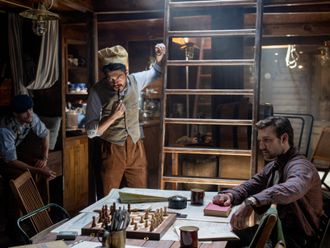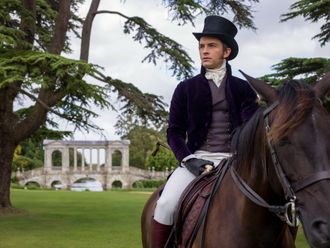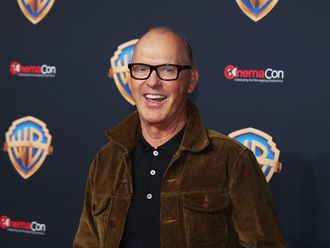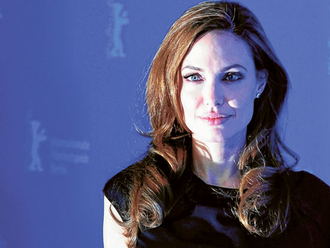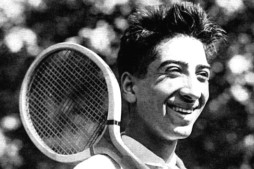
Very few global brands today can boast of fascinating backstories. Lacoste, the French fashion brand, is one of them. Founded in 1933 by iconic tennis player Rene Lacoste, who crafted his own shirt after being dissatisfied with what players were wearing, the brand with the crocodile logo — used after Lacoste’s nickname on the tennis court — has since become a fashion powerhouse, with influences far beyond the tennis court.
In November of 2012, a Swiss family-held group Maus Freres bought the brand from Lacoste’s feuding family members.
The mission since has been one of keeping that rich history alive, while enriching its legacy and giving it a modern twist to stay on top of the cut-throat fashion industry.
Laurent Israel, who joined the company following the acquisition after working with Dior and Ralph Lauren, is one of the people tasked with that goal. The group studio and merchandising executive vice president was recently in Dubai to meet its regional partners and to check on the action at the Dubai Duty Free Tennis Championships, which Lacoste is sponsoring.
tabloid! caught up with him to talk brand evolution, creative challenges and where he wants to see Lacoste five years from now:
This is your first time in Dubai. What’s on your agenda?
We are here to explain and share with our partners, the Chalhoub Group, the new collection, the brand evolution and the step-up in our strategy and how we would like the brand to go from a store perspective to a visual merchandising perspective.
Also, it’s been 18 months since we bought back the brand and for the first time we can now think as a singular truly global brand. We want to go back to the heritage, twist the codes in a modern way and build a real lifestyle around the Lacoste brand.
In 2013, Lacoste celebrated 80 years. For a brand with such a long history, has it been a challenge to stay relevant?
To be honest, staying relevant has not been difficult at all. We have such a strong history and strong DNA that twisting the heritage and projecting it into modernity is not the most difficult part. You can use different techniques, inject some new technology and revisit some stripe layouts and make them more modern.
The most challenging is to bring coherence to the brand. To bring commonality… one pillar for the brand that irrigates all the worldwide needs. To have one vision and one brand message and one flavour around the world. We are working towards it and we need to make sure we are speaking the same language.
In 2010, Portuguese designer Felipe Oliveira Baptista was hired as the creative director of the brand. But with so many parts to the brand, how involved is he with the entire creative process?
Felipe is our freelance creative director. He is part of the team three days a week. He gives his inputs for licensing and for products and focuses on the fashion show. Then the team orchestrates and rolls out the different themes and segments: from kids to Live to men to women — it’s a huge job.
It’s more a teamwork versus just a creative director bringing out a collection.
Is that a better way of working as opposed to one designer creating a collection?
I think it’s all about emulating. We are a still a business-driven company. So when you’re exchanging ideas and sharing and proposing, there’s always something special that comes out. And I think for Lacoste that’s the right way of working.
It’s more of a brand approach versus one integrated designer approach where the brand itself is super important.
What’s the next level that Lacoste wants to aspire to?
The next level is to create an iconic wardrobe, a lifestyle wardrobe…a non-mono- product wardrobe leveraged on our DNA and history, which is innovation, creative, comfortable and functional. And we want to use all those assets to create the complete wardrobe, a seven-day wardrobe, for men, women and kids. And to be the leading player in the premium casual-wear market.
Would you ever aspire to be a luxury brand?
We need to be coherent. When you sell 35 million pieces with an average of $110 (Dh403) per piece, you cannot say you are a high-end luxury brand. We are a creative lifestyle premium brand. Personally, I don’t like the term ‘accessible luxury’. It doesn’t really mean anything.
Premium is the right word and I think globally there is a space for this kind of product. The high-end is settled. The mass products are there. Then there’s the premium, cool, edgy, functional and innovative segment for which there’s a lot of room for… from a product, price and business perspective.
Considering the brand was founded by a tennis player, how important is the sport to the brand?
After I joined the company two years ago, we re-thought the sports strategy. We segmented the sports into two pillars: one that is on-court, which has the performance-wear items. Then there’s the lifestyle approach: so, you’re a spectator, what do you wear?
So within this sports strategy we have our two main historical sports pillars: tennis and gold. And these are completely separate from the casual-wear segment.
Where do you want to see Lacoste five years from now?
I think what I would love to see is to make it a premium lifestyle brand, an iconic wardrobe with a fashion angle, with very nice story-telling and strong windows and shop layouts. We want to be a very known brand and a very desirable brand. And I want our iconic polo shirts to become even more of a desirable item.



